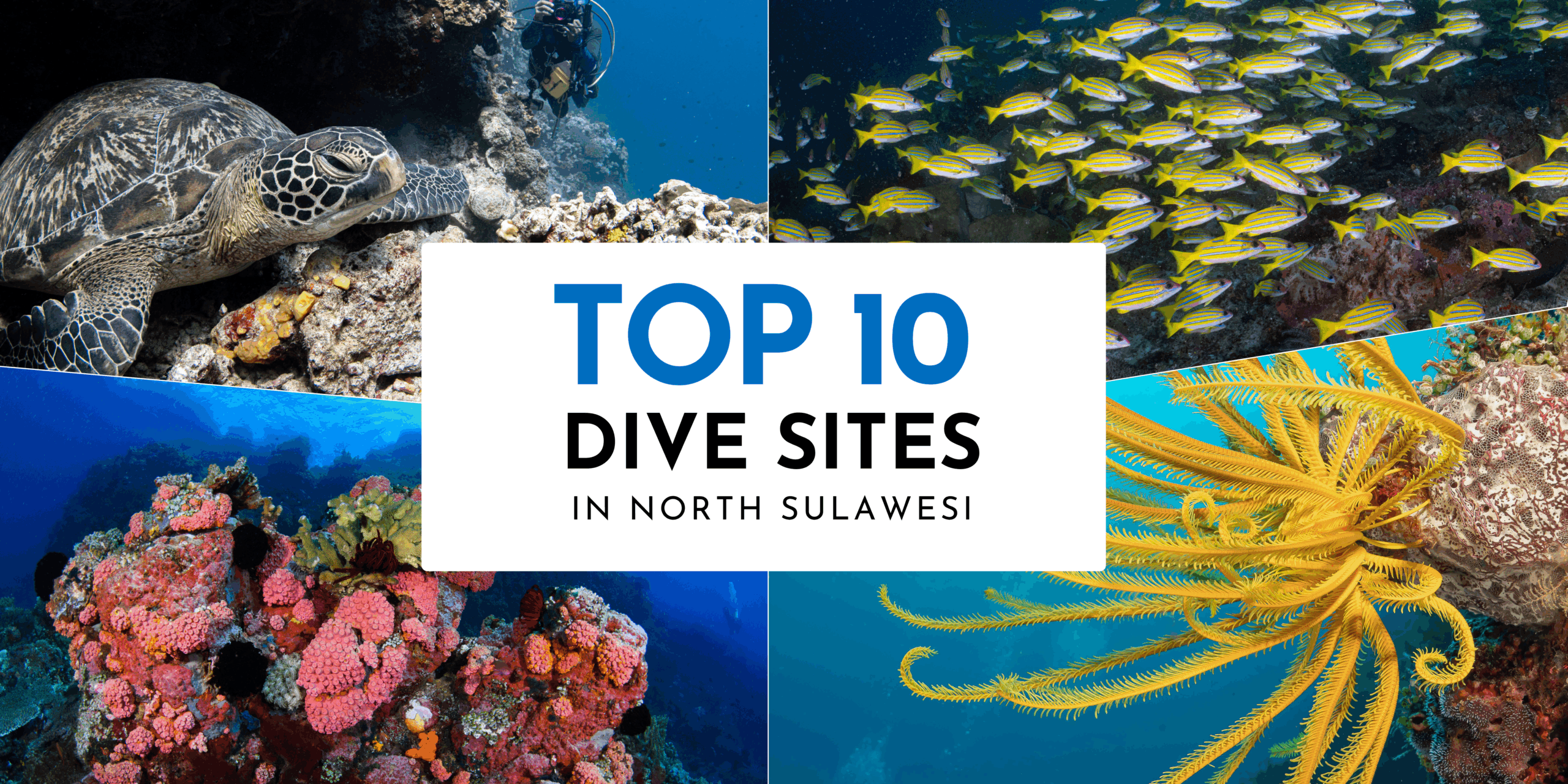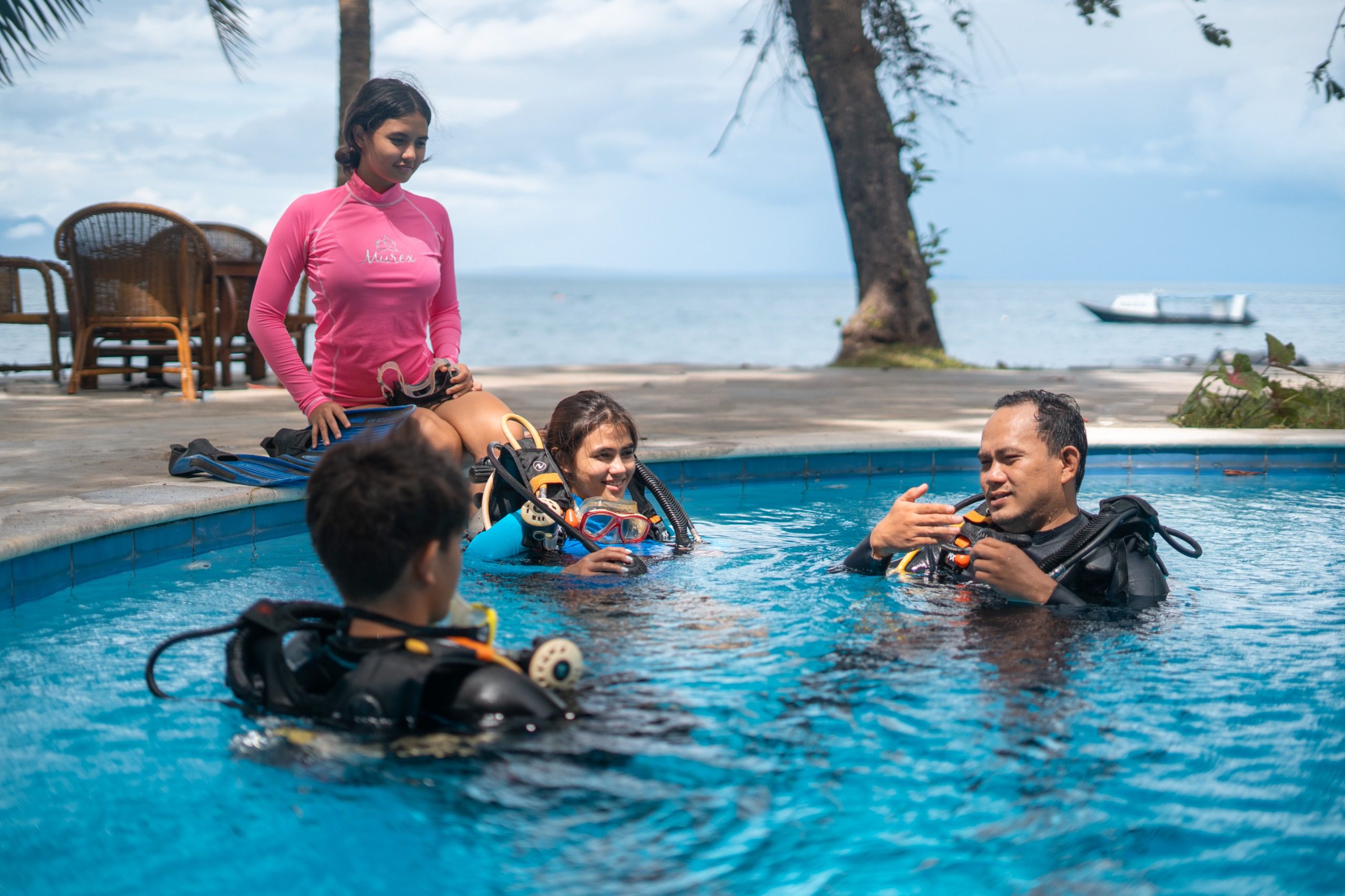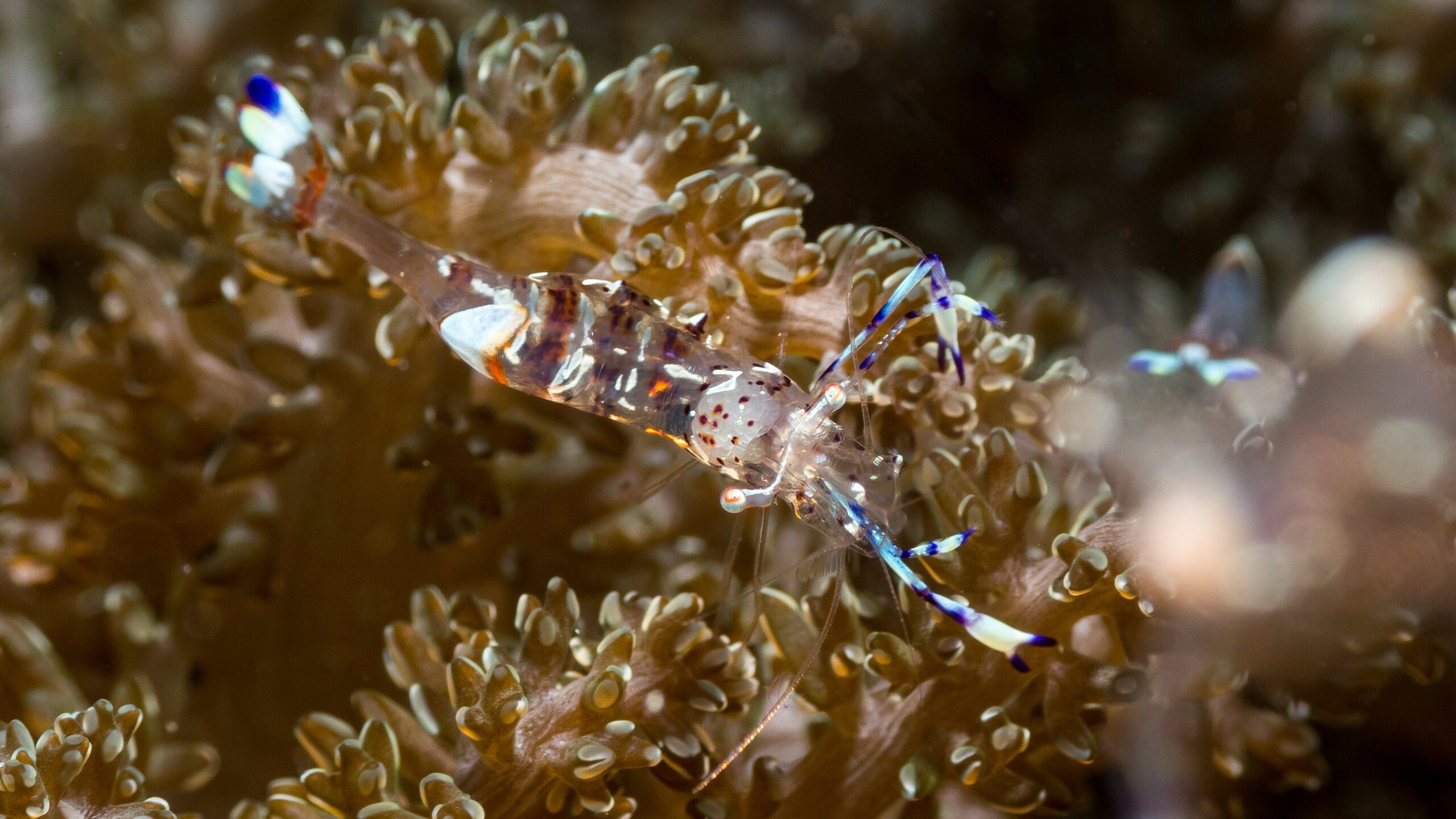
Discovering the Cleaner Shrimp in North Sulawesi
Beneath the clear waters of North Sulawesi lies a captivating world waiting to be explored. Amongst the vibrant coral reefs and bustling marine life, a remarkable creature takes center stage—the Cleaner Shrimp. These small crustaceans, with their graceful movements and intriguing symbiotic relationships, can be found in some of Murex’s dive sites. Join us as we dive into the world of North Sulawesi’s shrimp and discover their beauty and importance to our oceans.
HUMPBACK CLEANER SHRIMP (LYSMATA AMBOINENSIS)
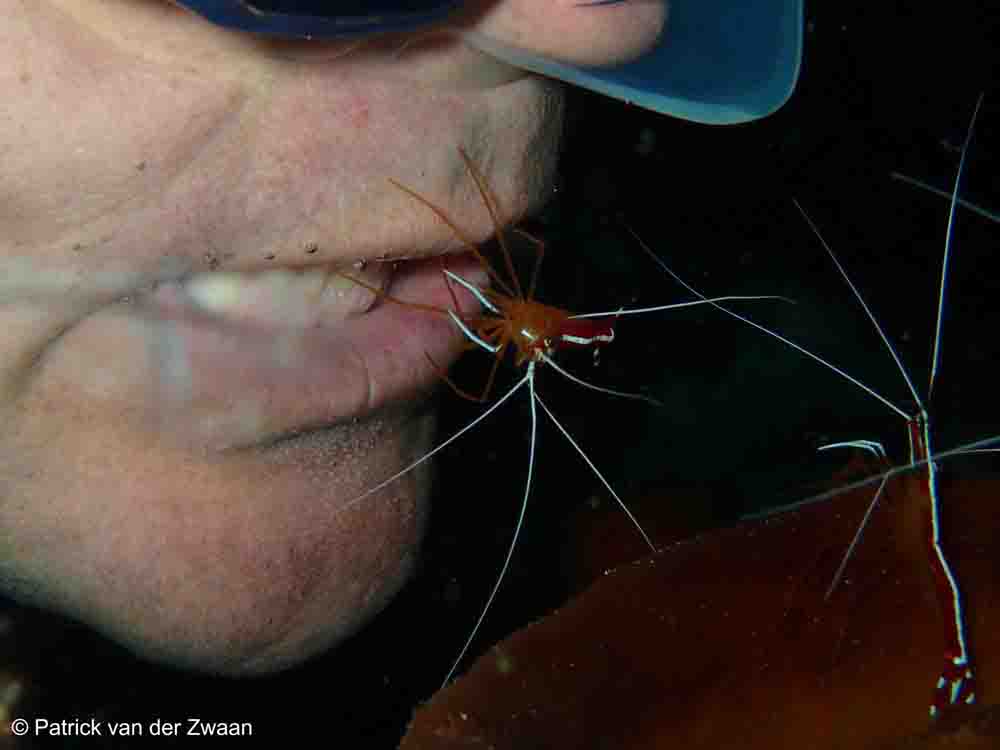
This species of cleaner shrimp is also often referred to as the “White Line Cleaner Shrimp” as it has an orange body with a broad red stripe and a thinner but well defined white stripe down the back. This species attracts fish in need of cleaning by waving its white antennae and feeding on parasites and dead tissue which they scavenge from fish during the cleaning process.
Their presence on any reef undoubtedly maintains the health of the reef fish. This species of shrimp hatches from eggs and all hatchlings are male. Like most crustaceans they molt their shells periodically as they grow and after a few molts the Humpback Cleaner Shrimp becomes a hermaphrodite and functions as both male and female!
Dive Sites: The best dive sites for finding this particular shrimp are Nudi Falls in Lembeh, Murex Manado House Reef, Lekuan I at Bunaken (in the small caves where we also find white tip reef sharks) and Sahoung in Bangka.
COLEMAN SHRIMP (PERICLIMENES COLEMANI)
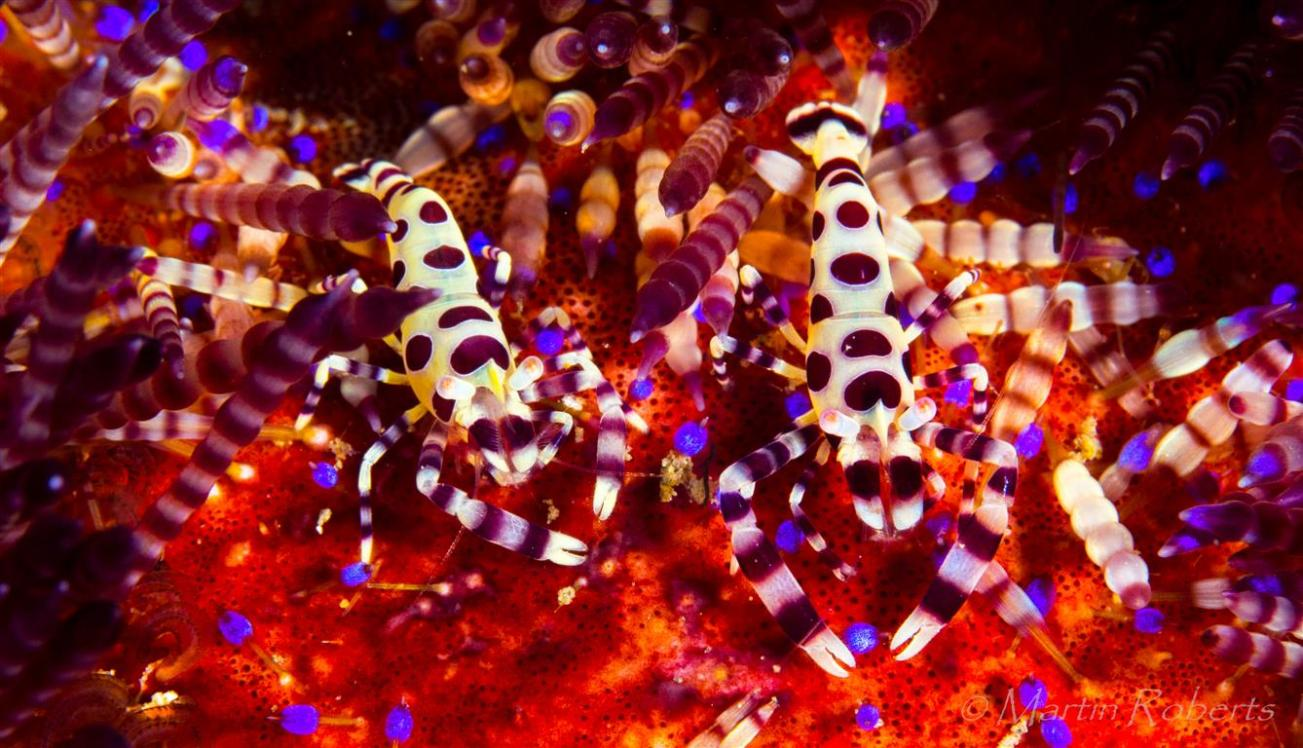
The Coleman shrimp is a type of commensal shrimp which is also known as the Fire urchin shrimp because it lives exclusively in symbiosis with the Variable fire urchin (Asthenosoma varium). This species of shrimp is often found in pairs and its delicate markings combined with the bright color of its host urchin make it an exceptional underwater photography subject.
The largest of the pair is usually the female but they still only grow up to 2 cm. These crustaceans can be found on urchins from 5 – 30 meters and they feed on parasites which are attracted to the urchin as well as algae and plankton.
Dive Sites: Coleman Shrimp do not live on all fire urchins; they are quite a rare find but the best dive site for spotting them are Jahir 2 in Lembeh. Around Bangka and Manado they are even rarer. You can try your chances at City Extra in Manado but you have to be very very lucky.
ANEMONE SHRIMP (PERICLIMENES BREVICARPALIS)
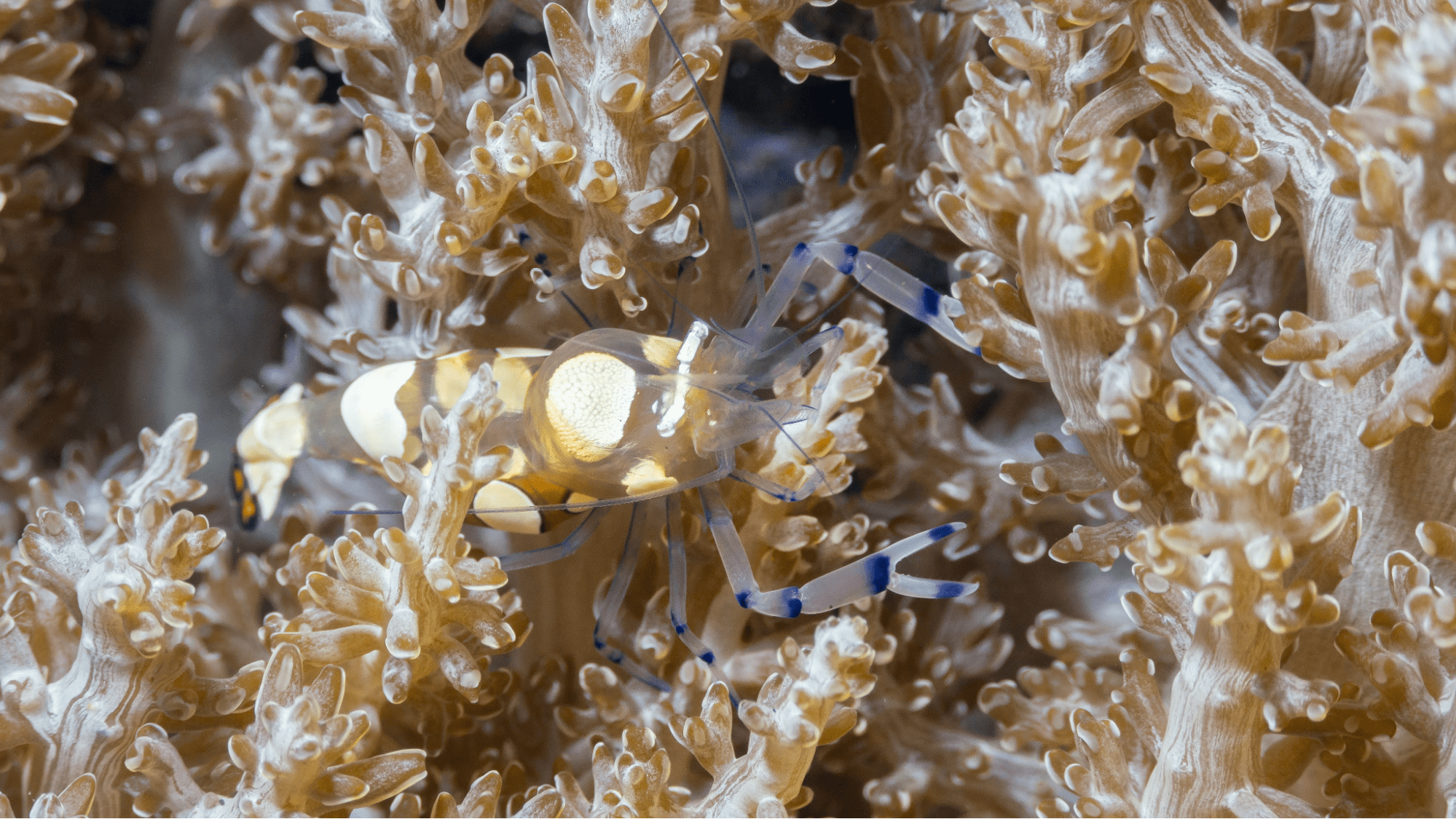
This species of anemone shrimp is known by several different names, including “White spot anemone shrimp”, “Glass anemone shrimp” and “Peacock tail anemone shrimp”. All three names refer to its translucent body which is decorated with white spots or the 5 orange spots on its tail which are edged in back and have a close resemblance to peacock tail feathers.
This shrimp grows up to 4 cm and is found mainly on the sea anemone Crytodendrum adhaesivum at depths of up to 30 meters. It’s not an especially rare species but they can be quite mobile on the anemone which means you need some patience to capture a crisp image.
Dive Sites: Anemone shrimp can be found at many of our dive sites in Manado, Bangka, Lembeh and Bunaken including all three House Reefs.
EMPEROR SHRIMP (PERICLIMENE IMPERATOR)
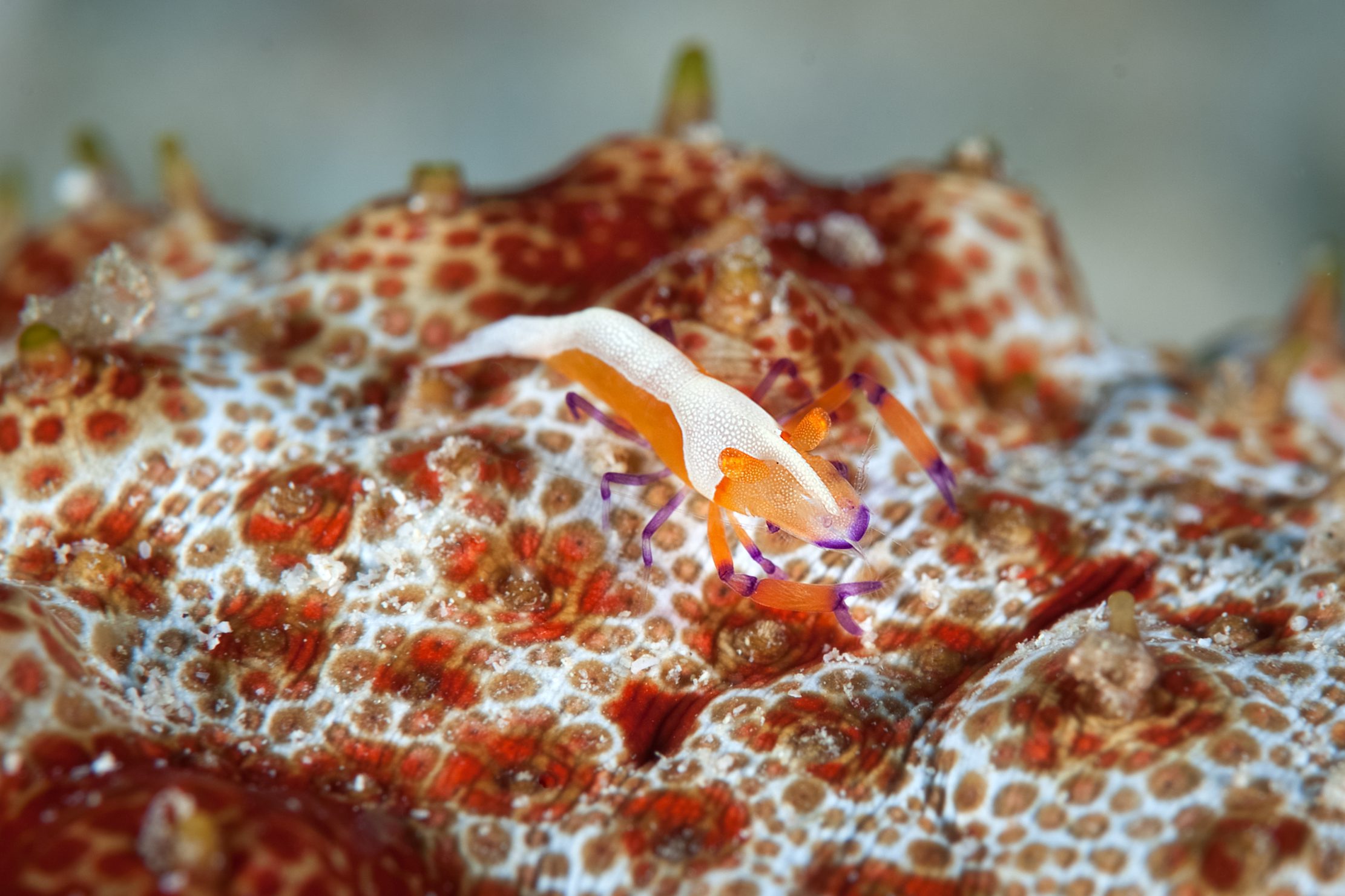
This is another small species of shrimp which grows up to 2 cm. It typically has a red coloration with distinct white or white spotted patterns on its head, back and tail. It has orange claw arms and purple claws and joints. The female is generally bigger and more robust looking than its male counterpart.
This is an easy type of shrimp to find here in North Sulawesi as it lives in symbiosis with sea cucumbers on which it lives on the underside – don’t be surprised though if you see one “riding” on the back of a large species of nudibranch – they are known to do this too!
Dive sites: If you are looking to see emperor shrimps we recommend Bethlehem in Manado, Sampiri in Bangka and Air Prang in Lembeh.
Dive and Stay at Murex Resorts
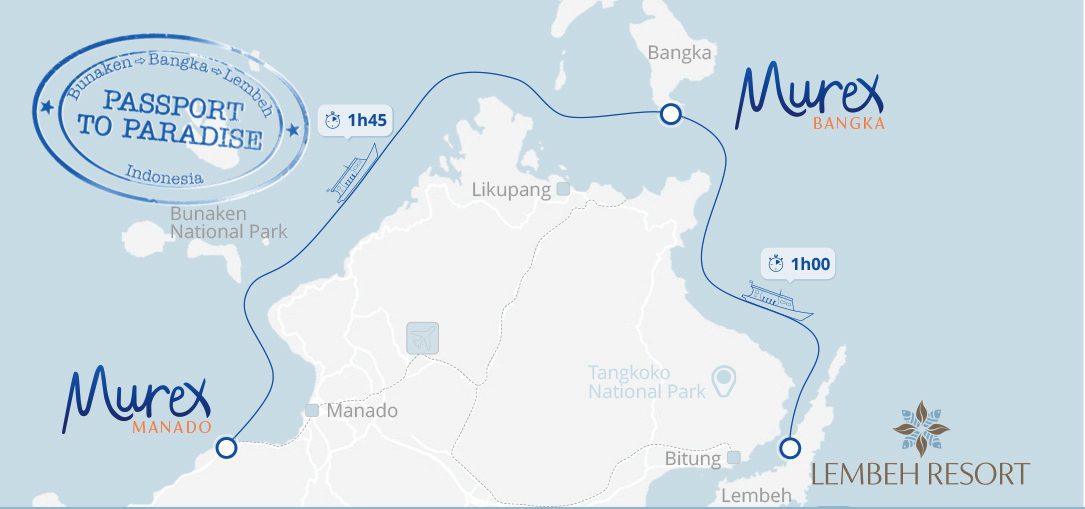
Ready to embark on your underwater adventure in North Sulawesi? Book your stay at Murex Resorts and dive into the captivating world of the Cleaner Shrimp. Immerse yourself in the vibrant coral reefs and discover these remarkable crustaceans alongside a multitude of marine life.
Want to see more of North Sulawesi? Why not join us on Passport to Paradise where you can explore Bunaken – Bangka – Lembeh in one trip? Let us know how many nights you would like to stay in each location and we’ll take care of the logistics for you – your holiday starts here!
Contact us today for more information or to make a booking: reservations@murexresorts.com. We look forward to welcoming you to our North Sulawesi resorts!


